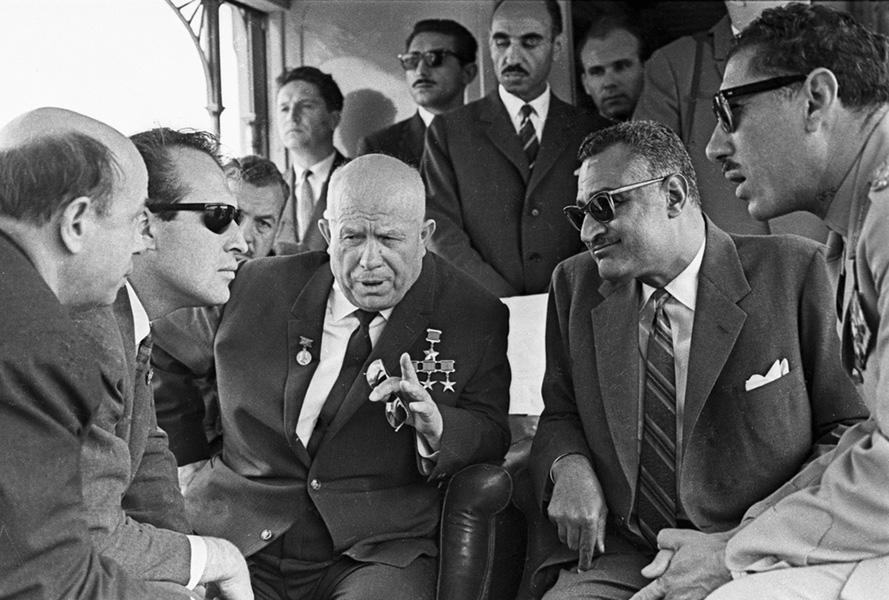
HADETU: A Biography of a Communist Organization
By Mahmoud El Wardany
Dar El Hilal, 2007
Arabic
Egyptian novelist Mahmoud El Wardany’s latest adventure is a risky one. A history of one of the most important organizations of the Egyptian left, HADETU: A Biography of a Communist Organization is an endeavor that the author rightfully likens to “entering a minefield.” El Wardany himself, as those in the know are aware, was once affiliated with a leftist organization, and one that was HADETU’s primary ideological competition within the Marxist camp. His position is therefore a charged one.
HADETU stands apart from the numerous other books taking on the Egyptian left, most of which are published by sympathetic or, alternatively, opposing organizations. HADETU was published by the official state-owned Dar-El-Hilal, and one can’t help but wonder, Why now? Has this history finally ceased to be a source of anxiety for both the powers that be and the remnants of the various Marxist groups that are still active in Egyptian cultural life? Anxieties aside, the book emerges against a shifting backdrop: the left wing’s decline as an oppositional bloc with a meaningful connection to the masses, and the simultaneous ascension of the religious right.
From the beginning, El Wardany offers that he is not interested in “historicization” or in evaluating HADETU’s performance, political positions, or relationship to fellow leftist organizations. Instead, he states that his main aim is “to retrieve the tremendous energy, urgency and presence that the Egyptian Nationalist Movement experienced between the end of the 30s and 1965, the year the Communist parties dissolved themselves.” In this he is largely successful. The book manages to present the numerous and sometimes conflicting voices within the movement, while resisting the tendency to promote fixed meanings. Testimonies by the rank and file of the party and inspirational anecdotes (one features the mother of one of the workers- turned-revolutionaries, who provided a safe house, tricking the Brit- ish and allowing workers disguised as fishermen to enter Port Said to join the popular resistance in 1956) are mixed with the more theoretical testimonies of the leaders and architects of the movement.
Still, the author fails to answer some of the very questions he raises. For example, why were divisions and splits endemic to the movement? While he describes such splintering as “a genetic disorder,” he never really explores the causes for such a tendency. Meanwhile, essential questions are by turns obscured and exaggerated as El Wardany constructs a grand historical narrative in 500-plus pages. (Although he claims to address the general reader, the text occasionally exhausts that same reader with superfluous details.)
Indeed, HADETU sometimes appears to be aimed at a specific “interpretive community” of leftist groups and concerned historians. When El Wardany flatters some of the movement’s leaders through banal descriptions, of the “sincerest of activists” variety, we suspect that the author has been influenced by a (perhaps un- conscious) desire for that community’s approval. When the reader questions the author’s motives, the work begins to fail.
Unable to provide a serious critique of their shared core beliefs, El Wardany regurgitates the polemics of HADETU’s different leaders (including Dr Refaat El Saed, Fakhry Labib, and Ahmed Hamroush). Such regurgitation is most glaring as he addresses some of the most loaded subjects in regional history, such as the 1947 partition of Palestine and founding HADETU member Henri Curiel’s (1913-1978) curious pro-partition position regarding the Arab- Israeli conflict. El Wardany, inexplicably, indulges in an emotional and defensive appeal on behalf of Curiel.
Some of the author’s choices are fascinating but remain largely unexplored. In the end, though, HADETU does manage to raise pertinent questions. Thorny issues such as squandered political opportunities, the decision to dissolve the party in 1965, and the role of the movement in the popular resistance to the 1956 tripartite aggression are at least broached. His treatment of archetypal events, such as the short-lived 1957 unification of leftist organizations, captures the contradictions of the movement. In that case, promise, optimism, and faith in the future were compromised by poor planning and a legacy of mutual suspicion and doubt. El Wardany’s portrait of a fractured left is a revealing and valuable one.